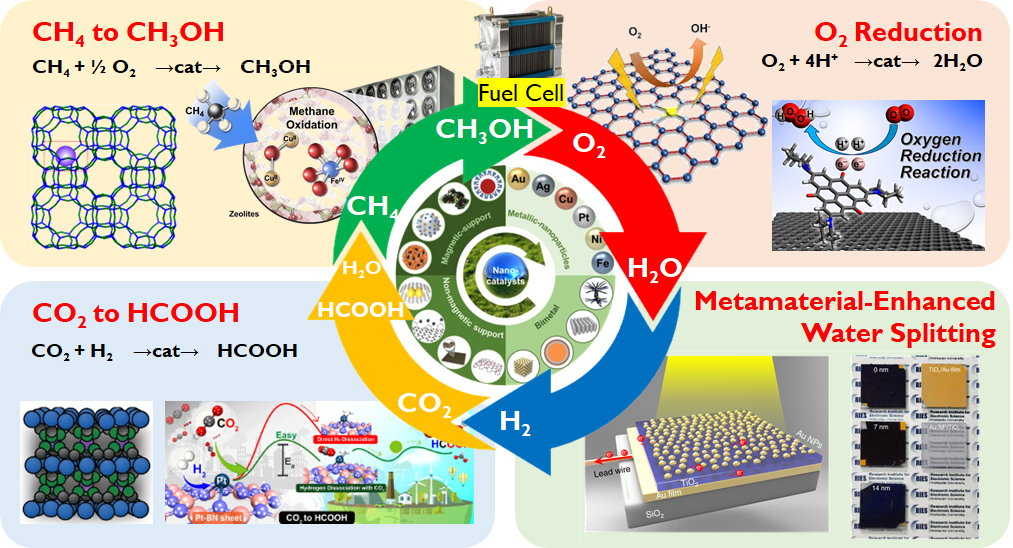Rational Design of Nanocatalysts for the Direct Conversion of Greenhouse Gases to Value-Added Chemicals



Principal Investigator: Muhammad Haris Mahyuddin, Ph.D.
Partner: Prof. Kazunari Yoshizawa (Kyushu University, Japan)
Team Members:
- Adhitya Gandaryus Saputro, Ph.D.
- Mohammad Kemal Agusta, Ph.D.
- Hadi Teguh Yudistira, Ph.D.
- Reza Pamungkas Putra Sukanli, S.T.

The present study aims to increase the reactivity and selectivity of the four targeted reactions by searching potential catalysts and suitable photosensitizer both experimentally and theoretically. Specifically, we will first perform computer simulations based on the DFT, KMC, and FIT methods to gain better understanding on how the candidate catalysts behave toward the greenhouse gases and how the candidate metamaterial behaves toward the electromagnetic-wave absorption, as elaborated below in detail. Subsequently, we will perform several analyses to explore factors influencing such behaviors and fabricate the metamaterial by utilizing Nano Electromechanical Systems (NEMS) fabrication method. This process will continue to cycle until we find catalysts with optimum performance.
https://sites.google.com/view/rispro-nanocatalysts/
The objectives:
- To investigate the catalytic reaction mechanism and the active site formation mechanism,
- To investigate the molecular orbitals and electronic structures along the reaction coordinates,
- To investigate the effect of active site modification (geometry, structure, location, etc.) on the reactivity of the catalysts,
- To investigate the effect of solvent on the extraction of and the selectivity toward desired products,
- To investigate the effect of a gold-based metamaterial on the efficiency of TiO2 as a photocatalyst of the reactions.
- To suggest potential catalysts that exert high reactivity and selectivity.
